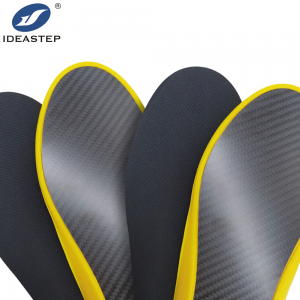
Carbon fiber insoles offer several advantages and disadvantages compared to other types of insoles. Here are some key points to consider:
Advantages:
1. Lightweight
Carbon fiber is an extremely lightweight material, making carbon fiber insoles ideal for individuals who want minimal added weight in their shoes.
2. Strength and Durability
Carbon fiber is known for its exceptional strength and durability. Carbon fiber insoles can withstand heavy use and maintain their shape and support over time.
3. Arch Support
Carbon fiber insoles often provide excellent arch support, helping to alleviate discomfort and pain associated with conditions like plantar fasciitis or flat feet.
4. Thin Profile
Carbon fiber insoles are typically thin, allowing them to fit comfortably in a wide range of shoe styles without causing crowding or discomfort.
Disadvantages:
1. Cost
Carbon fiber insoles tend to be more expensive compared to other types of insoles due to the high cost of the material and manufacturing process.
2. Rigidity
While carbon fiber provides excellent support, some individuals may find the insoles too rigid or stiff for their liking. This can be a matter of personal preference.
3. Limited Cushioning
Carbon fiber insoles are primarily designed for support and stability rather than cushioning. If you require significant cushioning or shock absorption, you may need to supplement the insoles with additional padding or choose a different type of insole.
4. Availability
Carbon fiber insoles may not be as readily available as other types of insoles, making them slightly more challenging to find in stores.
It’s important to note that the effectiveness and comfort of any insole can vary depending on individual foot anatomy and specific needs. It’s recommended to consult with a healthcare professional or podiatrist to determine the most suitable insole option for your specific requirements.
If you are interested in carbon fiber insoles, you can read this page: https://www.aideastep.com/carbon-fiber-insoles/.
